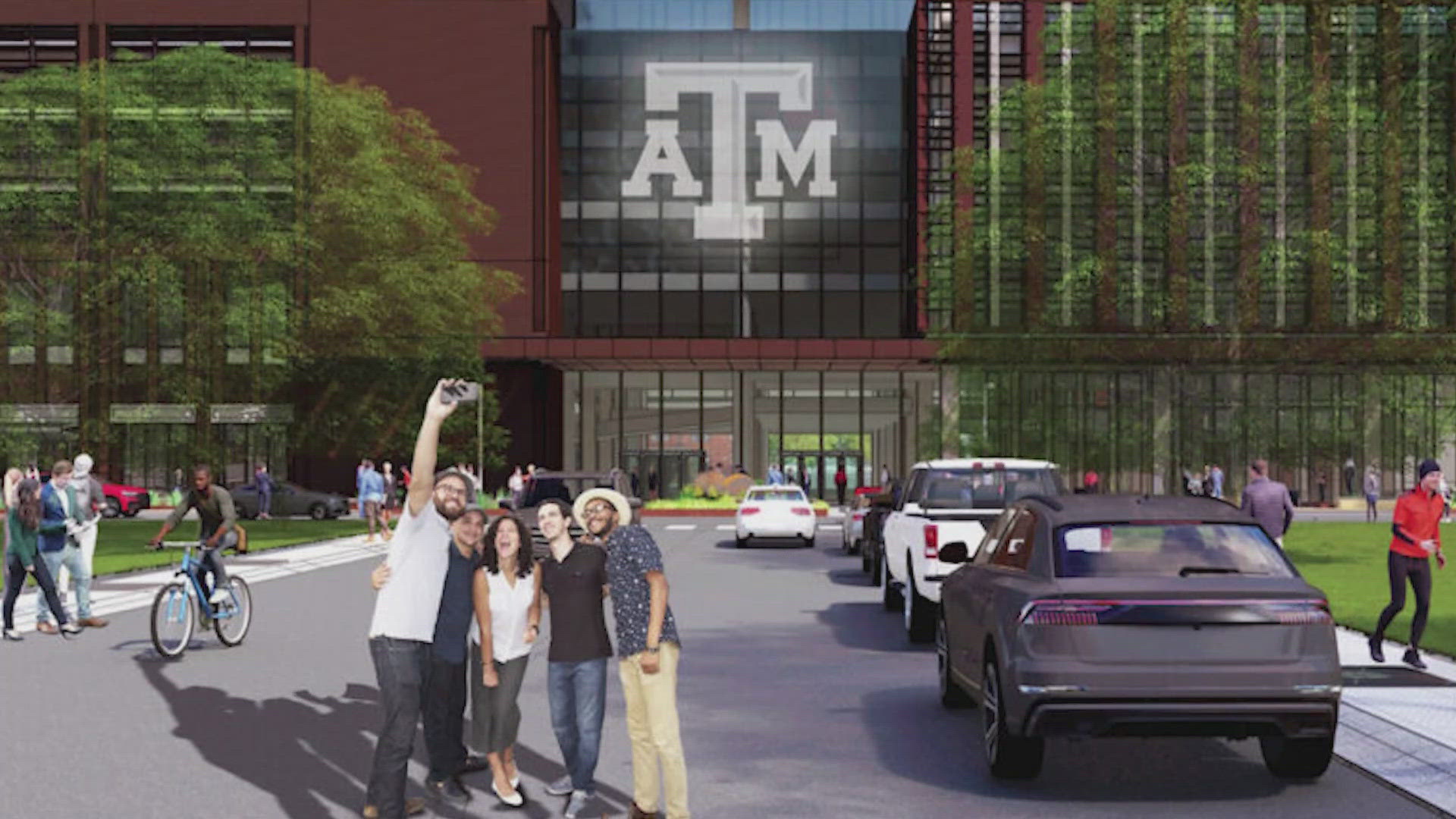FORT WORTH, Texas — The Texas A&M University System Board of Regents moved Thursday to begin designing a second building on its downtown Fort Worth campus.
The new 'Research and Innovation Building A' will be located across the street from the eight-story $180 million Law and Education Building currently under construction. City and university leaders broke ground on that project last summer.
The university's plan promises to transform downtown Fort Worth's southeast corner, which has been mostly vacant for decades.
"We really want buildings full of people who are exchanging great ideas, figuring out how to make money, falling in love; doing all the things that human beings do to move society forward," Downtown Fort Worth, Inc. president Andy Taft said. "That doesn't happen in a parking lot."
There are plans to develop almost all of the 12 vacant city blocks in the quadrant, Taft said. "The broad vision is coming together," he added. "It's very gratifying and exciting."
Texas A&M-Fort Worth's new facility could cost up to $260 million. It will include around 150,000 square feet of office and lab space.
Private companies will occupy the rest of the building, allowing students and researchers to closely collaborate with industry professionals.
"The Law and Education building really is an academic resource," Texas A&M-Fort Worth chief operating officer Robert Ahdieh said. "It's purely academic. These are training grounds. But this first part of the Research and Innovation Building is the bringing together of those academic resources with industry."
Ahdieh envisions an environment similar to Silicon Valley or Cambridge's Kendall Square, adjacent to the Massachusetts Institute of Technology. Both areas are known for producing innovative research and ambitious startup companies.
"There's no reason why we can't create something similar here in the metroplex," Ahdieh said, referring to Fort Worth's population growth and the number of businesses relocating to North Texas.
The Research and Innovation Building will also house Texas A&M system agencies, including the Texas A&M Transportation Institute. The facility will include space for an engineering experiment station, AgriLife Research and the Texas Division of Emergency Management.
“Our state agencies bring a whole different dynamic to the campus, whether through research, workforce training or other services to the community and local businesses,” said Texas A&M chancellor John Sharp. “The A&M System is here to support the regional economy.”
The university aims to complete construction on the Law and Education building in December 2025. It's not clear when construction on the Research and Innovation Building could begin.
Texas A&M University System officials say the existing law school will also eventually be demolished and replaced with a multi-purpose community building that will serve as the campus's main entrance.
The campus is located across Commerce Street from the expanded Fort Worth Convention Center.
City leaders expect the plans will attract a new hotel to the quadrant. They envision a walkable, shaded corridor from Texas A&M's new law building to the renovated convention center.
"All of those things work together to create a place that people want to go to," Taft said. "While we're building these big institutions, we need to make sure the ground level is human-scaled and there are lots of things to do."
He anticipates developers will announce plans to build more housing in the area, too.
The overall plan will draw economic attention to Fort Worth, Taft said.
Ahdieh noted that adding such destinations to downtown's southeast corner will connect Fort Worth's center to neighboring locations ripe for development, including the near southside and historic Butler Place.
"What we're doing here not only activates the southeast quadrant but makes the northwest quadrant and southwest quadrant much more interesting places to grow and develop," Ahdieh said. "And it creates a kind of connectivity even beyond the four corners of the immediate downtown, in terms of growth and opportunity."
Other headlines:

